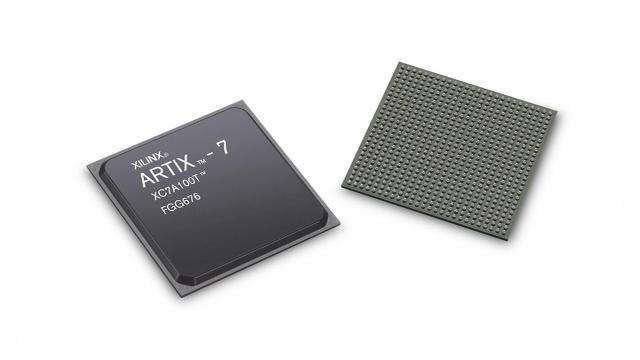Time: 2025-05-07 11:14:13View:
The Xilinx 7 Series FPGAs (including Artix-7, Kintex-7, and Virtex-7) offer several key logic advantages that make them highly efficient for a wide range of applications, from embedded systems to high-performance computing. Below are the main architectural and performance benefits:

High-performance logic fabric based on 28nm HKMG (High-K Metal Gate) technology, balancing power efficiency and speed.
Configurable Logic Blocks (CLBs) with 6-input LUTs (Look-Up Tables) that can be split into two 5-input LUTs, improving logic density and flexibility.
Dedicated carry chains for fast arithmetic operations (e.g., adders, counters).
Wide distributed RAM (LUT-RAM) and shift registers, reducing the need for block RAM in small memory applications.
Mixed-Mode Clock Managers (MMCM) and Phase-Locked Loops (PLLs) for precise clock synthesis, deskewing, and jitter reduction.
Low-power clocking with dynamic clock gating, critical for battery-operated devices.
Gigabit Transceivers (GTX/GTH/GTZ):
Up to 28.05 Gbps (GTZ in Virtex-7) for high-speed serial protocols (PCIe Gen3, SATA, 10G Ethernet).
Low-power modes for energy-sensitive applications.
Integrated PCIe® Gen2/Gen3 blocks, reducing external PHY requirements.
DSP48E1 slices (in Artix-7/Kintex-7/Virtex-7) support:
Multiply-Accumulate (MAC) operations at up to 550 MHz.
Flexible 25x18 multipliers with optional pipelining.
Bitwise logic operations, enabling custom accelerators (e.g., AI/ML inference).
Block RAM (36 Kb BRAM) with true dual-port access, configurable as FIFOs or caches.
UltraRAM (in Virtex-7) – 288 Kb memory blocks for large buffer storage (e.g., video frame buffers).
ECC support for error correction in mission-critical systems.
28nm process reduces static/dynamic power vs. older FPGAs.
Power gating for unused logic regions.
Hysteresis-based I/O standards (HSTL, SSTL) for low-power memory interfaces.
Same architecture across Artix-7, Kintex-7, Virtex-7, enabling easy migration.
AES/SHA-256 bitstream encryption to prevent IP theft.
SEU (Single-Event Upset) mitigation in Virtex-7 for radiation-tolerant designs.
| Feature | Xilinx 7 Series | Intel Cyclone/Arria 10 |
|---|---|---|
| LUT Structure | 6-input LUT (flexible) | 6-input ALM (less granular) |
| DSP Slices | DSP48E1 (higher MHz) | Variable precision DSP |
| Transceivers | Up to 28.05 Gbps | Up to 17.4 Gbps (Arria 10) |
| Memory | UltraRAM (Virtex-7) | No equivalent |
✔ High-speed networking (100G Ethernet, packet processing)
✔ Embedded vision (real-time 4K video pipelines)
✔ Aerospace/defense (radar, secure comms)
✔ AI acceleration (DSP-based CNN inference)
The Xilinx 7 Series excels in logic density, power efficiency, and high-speed I/O, making it a versatile choice for both cost-sensitive and high-performance designs. Its unified architecture ensures scalability, while advanced DSP and memory resources enable complex compute tasks.
For low-power designs, Artix-7 is ideal, while Virtex-7 dominates in ultra-high-performance applications.